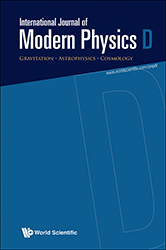A study of possible extended symmetries of field theoretic systems

Many physical systems, from superfluids to pi mesons, are understood to be manifestations of spontaneous symmetry breaking, whereby the symmetries of a system are not realized by its lowest energy state. A consequence of spontaneous symmetry breaking is the existence of excitations known as Goldstone bosons, which account for the broken symmetries. Here the authors investigate systems with larger than usual amounts of broken symmetry.
There has been much recent interest, especially among cosmologists, in theories known as galileons. Galileons are an interesting and novel, though still hypothetical, class of effective scalar fields which are extremely universal and have attracted much recent attention. They arise generically in describing the short distance behavior of the new degrees of freedom introduced during the process of modifying gravity, and in describing the dynamics of extra dimensional brane worlds. Modified gravity and brane worlds are just some of the ideas that have been studied as possible solutions to the cosmological constant problem—the problem of explaining why our universe seems to be accelerating. The galileons possess several key properties: they possess non-trivial symmetries, and are well behaved quantum mechanically compared to other types of fields.
Here the authors investigate whether it is possible to extend the key symmetries of the galileons even further, by enlarging the set of transformations under which the theory remains invariant. It is found that while it is not possible to enlarge this symmetry while maintaining the symmetries of special relativity and not introducing new degrees of freedom, it is possible to create new kinds of Galileon-like theories it the system is non-relativistic.
Non-relativistic systems such as superfluids are well described by effective degrees of freedom known as Goldstone bosons. Goldstone bosons are manifestations of spontaneous symmetry breaking, where the symmetries of a system are not realized by its ground state. The new kinds of Galileon-like theories uncovered here could be useful as descriptions of systems near Multi-critical points, points in the phase diagram where multiple phases coincide.
More information: International Journal of Modern Physics D, www.worldscientific.com/doi/pd … 42/S0218271814430019
Provided by World Scientific Publishing





















